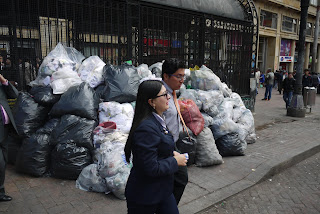 |
| Odebrecht didn't stop at paying off politicians. |
 |
| The 1071-km Ruta del Sol is to run from near Bogotá to the coast near Santa Marta. |
The company and its business partners also violated and ignored environmental laws on at least one of its headline projects in Colombia, according to a new report by Colombia's Controlaria.
The Controlaría found 442 violations of the environmental licenses of the $4 trillion peso-plus project, of which Odebrecht is part of the consortium. These involved waste water disposal, lack of reforestation, noise, mishandling of wildlife, and others.
The consortium "is not only not complying with the terms of the environmental licenses, but is not making any effort to comply," the Controlaria wrote.
 |
| Odebrecht bribed officials throughout Latin America. (Image: Notimerica) |
And even worse, other megaprojects, such as the dredging of the Magdalena River and the repair of the
Canal del Dique, are being carried out without even bothering with environmental permits, and in the case of the river, the ANLA has not bothered to oversee the project for nine years, the Controlaria found.
Is this a matter or corruption or just sheer apathy and laziness by supposed government watchdogs? Probably both.
For one of the planet's most biodiverse nations, and which claims to treasure its natural wealth, this situation goes way beyond scandalous. And it's in addition to the inherent damage done by these proyects, such as drying out wetlands, dumping silt into rivers and oceans, and facilitating deforestation by slash and burn farmers.
By Mike Ceaser, of Bogotá Bike Tours


















































